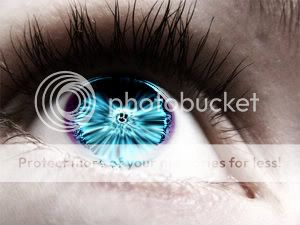
Image credits: punk-rocker-life
Over the last hundred years the development of science has revolutionised the world we live in. From the creation of radio and TV in the early 1900s, to the augmented reality eyewear being developed, such as Google’s Project Glass and University of Washington’s bionic contact lenses.
The latest leap in technology comes from a research group at Monash University, Australia. The Monash Vision Group is engineering a way for blind people to see again through a bionic-eye and wireless transmission.
How does this work?
This has been made possible by a breakthrough in the understanding of the relationship between the eyes and the brain.
It has been known for a long time that light is absorbed by the retina, at the back of the eye. Now, researchers have identified the ‘code’ that is used to transport the image from the eye to the visual parts of the brain.
They have been able to break this down into a microchip that can be inserted into the back of the eye through surgery. The procedure would also include inserting 650 hair-thin electrodes into the visual cortex (the part of the brain that controls vision).
It is foreseen that patients will wear a pair of glasses with a digital camera attached that acts as the retina, by capturing the image.
The images are converted into electronic signals and sent wirelessly to a microchip located at the back of the eye. The microchip will send signals to the hair-thin electrodes that penetrate the visual cortex. These electrodes, when stimulated, produce sensations of light in the patient’s visual field.
Follow this link to see a digitalised ‘implant of the future’ graphic.
Although this won’t enable perfect vision, images are only a grainy black and white at the minute.
Testing
The concept has been tested on the retinas of blind mice, and this showed significant improvement in their vision. Researchers claim to have perfected the microchip for monkey testing, which is the last step before it is ready for human testing.
“It’s an exciting time. We can make blind mouse retinas see, and we’re moving as fast as we can to do the same in humans. This is the first prosthetic that has the potential to provide normal or near-normal vision, because it incorporates the code,” Dr Nirenberg said.
The hope is to begin human testing soon. However it is predicted that this will only provide a solution to people who lost their sight as adults, and not to people who have been blind for their whole lives.
“It’s important that for our first patient they have had full adult vision so that we know that their brain can process these kinds of signals because it has done so previously,” Dr Pritchard said.
While this may not hold the key to restoring perfect vision yet, there is still a lot of work being done on the project and this is the first major milestone. It shows great signs of hope for the future.
Featured images:
- License: Royalty Free or iStock source: www.photobucket.com
Steph McLean likes to regularly blog about vision related topics, such as how technology is being used to aid the sight of people with vision impairment, or complete blindness. She writes for Lenstore, an ecommerce technology business that sells contact lenses and offers optical advice to customers in between visits to their Opticians.









Comments